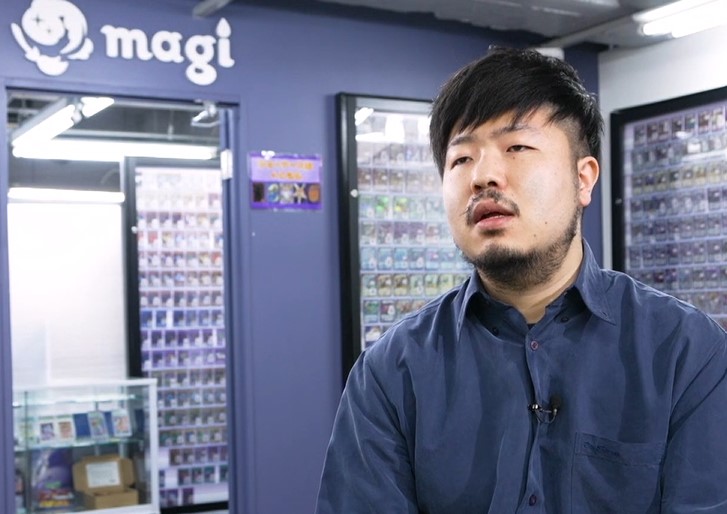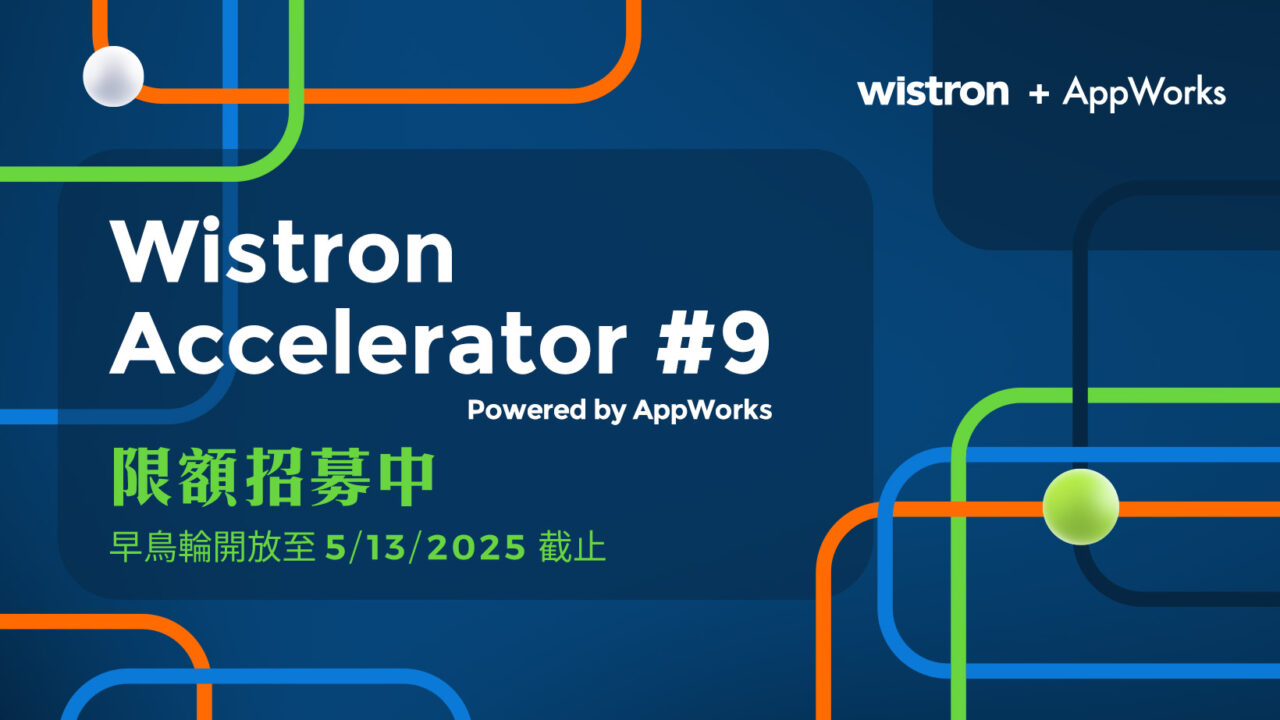
Founded in 2010 by Jamie Lin, AppWorks Accelerator is a startup community created by founders, for founders.
Every six months, we welcome founders who are building on the edge of what’s possible – those pushing the boundaries of technology and creating what the world has yet to imagine. We equip them with the necessary resources, mentorship, and community to turn bold visions into lasting impact.
We know there are many considerations for founders when applying to an accelerator. That’s why we’ve created an FAQ page to help you decide whether or not AppWorks is the right fit for your startup.
As of April 2025, AppWorks Accelerator #31 is open for applications. You can find important information about the Accelerator experience on our main page.
The FAQs
1. What do I need to know before joining the accelerator? What is AppWorks doing to help founders make the most out of the accelerator?
We understand the unique needs and aspirations for founders, and we’re committed to providing an experience that’s both flexible and comprehensive:
a. Tailored Events for Founders: No two founder journeys are alike — whether you’re just getting started, actively scaling, based in Taiwan, or operating from anywhere in the world, we’ve designed a flexible accelerator that blends online and offline experiences. You’ll have access to the resources, mentorship, and connections that best fit your unique path, ensuring that you get what you need, when and where you need it.
b. Regional Presence in Greater Southeast Asia: Beyond flexibility, what sets AppWorks apart is our deeply rooted presence across Greater Southeast Asia. With an active network spanning Taiwan, Singapore, Hong Kong, Indonesia, Vietnam, Malaysia, and the Philippines, we open doors to regional insights, cross-border opportunities, and partnerships that accelerate your growth beyond your home market.
c. Unlocking Taiwan’s Potential: Taiwan is home to a dynamic tech ecosystem, and we proudly maintain the most extensive network in the region. We invite you to consider Taiwan as a market ripe with valuable opportunities, a wealth of digital talents, reliable manufacturing partners, and a robust supply chain. The resources available here are vast and can significantly boost your venture.
We encourage founders to join us for in-person activities whenever possible, as face-to-face interactions with our network in Taiwan and across Southeast Asia can unlock deeper relationships, richer insights, and new opportunities that virtual meetings simply can’t replicate.
Your success is at the heart of what we do. We can’t wait to embark on this journey with you.
2. I already raised a Series A / I’m profitable, is AppWorks right for me?
The short answer is, yes!
The long answer is, reaching a funding goal can be a cause for celebration, but it’s also a relatively minor part of the founder journey. So many more things can go right or wrong, even with a funding round. There are many other facets to overcome and master. When we admit founders into the program, it is because we have carefully considered what they need as a founder, and how our resources and network across Taiwan and Southeast Asia can help them grow.
Joel Leong and Henry Chan at ShopBack had already built a business model and received seed funding in 2015 when they launched in Singapore before they came to AppWorks Accelerator #13 in 2016.
Joel told us that had the team known about Taiwan’s massive US$20 billion GMV e-commerce market and all the region-wide technical and tactical innovations that it would eventually yield, they would have made the move to Taiwan much sooner. Taiwan has since become one of ShopBack’s biggest markets and R&D centers. It demonstrates that funding rounds and business model maturity do not limit founders in learning something new.
As long as you think that AppWorks can help you in the entrepreneurial learning process, you should apply.
3. How can AppWorks Accelerator help a web3 founder?
As our web3 ecosystem has grown, so have opportunities for partnerships, knowledge exchange, and founder-to-founder support—all critical for entrepreneurs building in this network and community-driven space:
a. Grow with one of the largest web3 founder communities.
The web3 ecosystem within the AppWorks community now consists of 155 active teams with a total of 320 founders. These extraordinary web3 startups include Pendle (AW#20), a DeFi yield-trading protocol that enables the tokenization and trading of future yield; Resolv (AW#30), which issues stablecoins through a ‘Delta Neutral’ strategy and an over-collateralization mechanism; and Event Horizon (AW#28), a meta-governance platform that mobilizes community assets to influence external governance proposals.
As one of the region’s most active web3 founder communities, we help you navigate every stage of the journey—through mentor and founder intros, ecosystem resources, and peer learning on tokenomics, DAOs, and community-building.
b. Stay ahead of the game to capture the pulse of the ecosystem and access premium development partners
In web3, startups developing on the right public chain and working with the right partners can help create synergies and accelerate scaling. Within the AppWorks web3 ecosystem, almost 95 teams have developed their products on various public chains, including Ethereum, Solana, Arbitrum, Sui, TON, Base and so on. If you are a founder building on these chains, you can always find a connection within our ecosystem.
AppWorks stays closely connected with leading L1 and L2 ecosystems to ensure founders can tap into the best resources available. We also partner with key platforms and tools, such as GSR, Alchemy, Quantstamp, and Chainlink to make sure that blockchain startups gain the support they need to grow and thrive.
4. How does AppWorks Accelerator help founders enter new markets?
Since 2010, AppWorks has made close connections within founder communities and throughout the venture capital ecosystem. When startup teams decide to enter a new market, we can quickly help them learn from local partners to tap into key resources and business models that are specifically tailored to different regions.
The AppWorks community includes our accelerator alumni, international startup teams that have received investment from AppWorks Venture Funds, and mentors with insight and experience. Our community of founders are based all around the world, and many are from our key markets in Southeast Asia, such as Singapore, Indonesia, Vietnam, the Philippines, and Malaysia. For example, Qoala is an InsurTech startup headquartered in Indonesia that has expanded to Thailand and Malaysia, and the CEO/Co-founder, Harshet, is a seasoned founder and has been an active mentor to many startups in the region. Carousell is a startup from Singapore, which focuses on C2C e-commerce and has expanded into eight markets across Asia. The CEO/Co-founder, Siu Rui, has always been the go-to person for fellow founders who are exploring regional expansion.
In addition to our community, AppWorks has also established strategic relations with more than 25 venture capital funds across Southeast Asia and the web3 industry. Our partners include ACV, Golden Gate Ventures, Openspace Ventures, Ascend Vietnam Ventures, Foxmont Capital, Figment Capital、Reforge VC, and others. When entering a new market, we can easily cooperate with investors from different regions to help you quickly gain access to local connections and business opportunities.
5. What does AppWorks look for in applications?
When AppWorks reviews applications submitted by founders, we pay special attention to a founder’s north star. Some questions that might help you think about whether AppWorks is a good fit for you:
- Why did you launch your startup?
- What problem do you want to solve and why?
- What do you believe fundamentally needs to exist in this world that doesn’t already?
- What kind of future do you want to create and how will you get there?
- What have you already done to demonstrate your commitment to tackling this problem?
AppWorks Accelerator’s online application covers about 30 topics related to team background, product/service, business model, market analysis, and more. It is very detailed and requires time to complete. It also includes a required one-minute self-intro from the founder (CEO) for us to know you better.
6. Does AppWorks Accelerator cost anything?
No. AppWorks Accelerator has always been free for founders. We will not charge rent or service fees, nor will we require any form of compensation, such as sweat equity, tokens, options, revenue, or profit-sharing. Our exclusive mission is to help founders.
7. We need funding now, can we get an investment by joining AppWorks?
The short answer is you will have much better access to us than non-AppWorks accelerated teams. We will discuss with you and help you figure out at this stage of your startup’s journey if capital can give your startup a significant edge and/or take it to the next level, or if there are other more burning issues, e.g., achieving stronger product-market fit, figuring out a working go-to-market strategy, recruiting a solid co-founder, etc.
Any AppWorks founder is welcome to start a discussion with us on fundraising anytime. We will do our best to advise and support you with US$350 million in total fund size behind us.
8. My service (or product) has not yet started to make money. Can I still apply?
Of course! There probably isn’t a better time to learn in an accelerator than as a founder just starting out. This period before a founder has built a startup into a scalable business model with Product-Market Fit is called the “seed stage.” During this period, founders always need more than funding; they need a variety of entrepreneurial-related insights, inspiration from other founders, and room for trial and error. AppWorks Accelerator, with over 15 years of experience, was built to provide these lessons and more.
9. I’m planning to expand my business into Taiwan, however, since I am not a Taiwanese citizen, can you help me obtain a proper visa?
International founders admitted to AppWorks Accelerator, according to your qualifications and needs, AppWorks can help with your application for the Gold Card, or Entrepreneur Visa in Taiwan. This enables founders from overseas to concentrate on work in Taiwan without traveling abroad to sort out troublesome visa issues. We can offer guidance on this process.
10. Do I have to set up a company to join AppWorks Accelerator?
Not necessarily, but we recommend founders to set up an office when entering a new market, especially those of you that are B2B facing. This may enable you to build relationships with business partners and make negotiating commercial agreements smoother in the future.
For the founders who are planning to land in Taiwan, AppWorks has professional accounting and legal specialists who can assist in managing the necessary procedures, making the process of setting up much easier and more efficient.
11. What is the difference between applying during the first round vs. the final round?
The application period is split into two intakes, with interviews and admissions facilitated on a rolling basis. Based on past experience, teams that submit their application earlier tend to have a higher chance of being admitted and are also immediately granted access to all the resources that AppWorks Accelerator has to offer.
12. I have previously applied to AppWorks and have been rejected, can I apply again? Will it affect the chances of admission?
Reapplying represents the determination of the founder and is a positive signal for us. Therefore, we will re-evaluate all aspects, not only for the growth of the founder but also for the progress of the company. In the past, some entrepreneurs applied 2-3 times before being selected. In some cases, after unsuccessful applications, they continued to explore and eventually achieved more user growth and deeper insights. In other cases, they honestly faced the fact that there was no Product-Market Fit (PMF), changed their topic, found a scalable business model, and reapplied. These entrepreneurs have performed well after graduating from the accelerator.
We hope the above FAQ can help clarify your questions about AppWorks Accelerator. If you seek more clarity, please write to: [email protected], and we will try to answer your questions.
If you’re a founder creating what the world doesn’t know it needs yet, you’ve come to the right place! Applications for AppWorks Accelerator #31 will be open until June 30, 2025.


